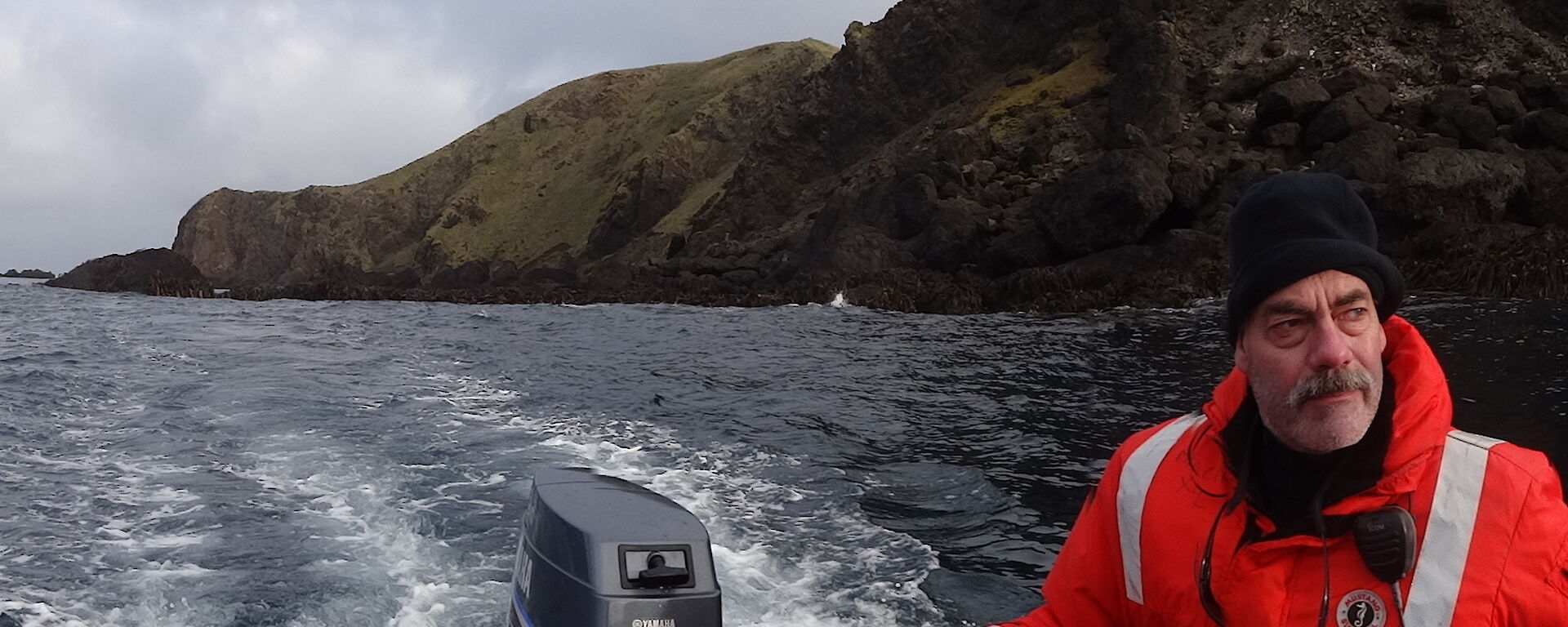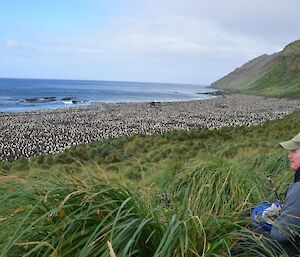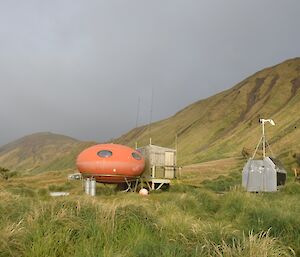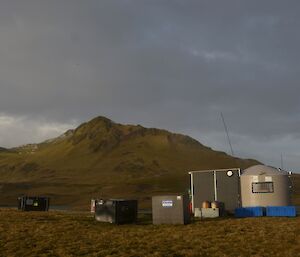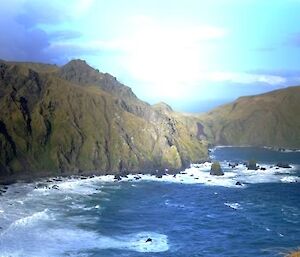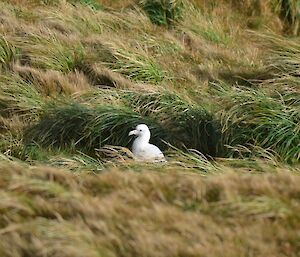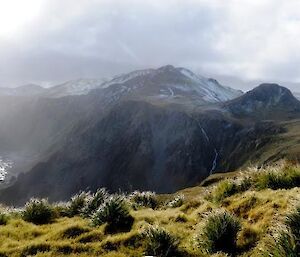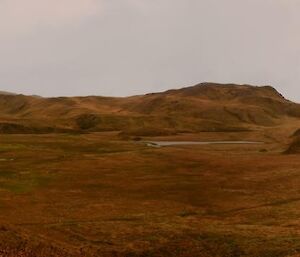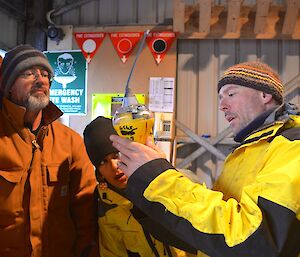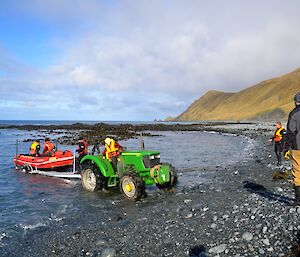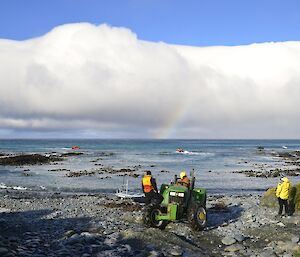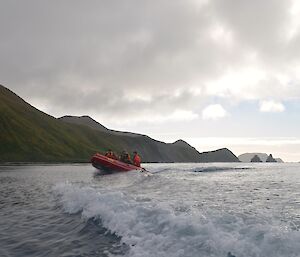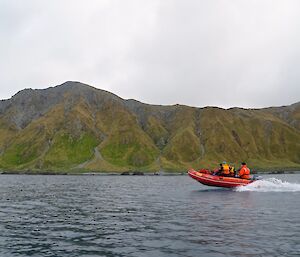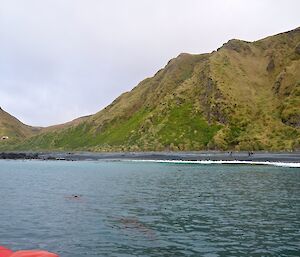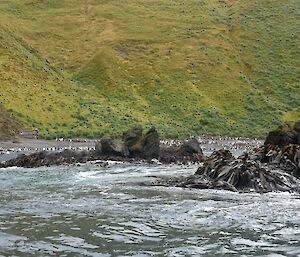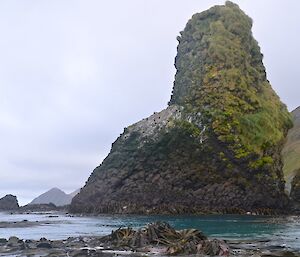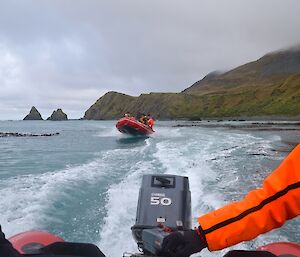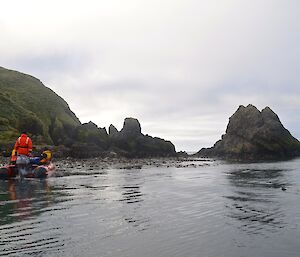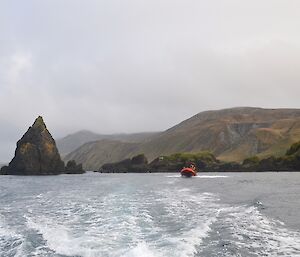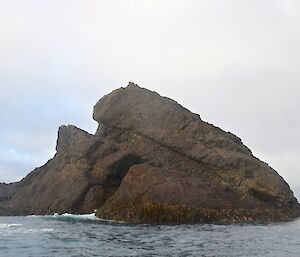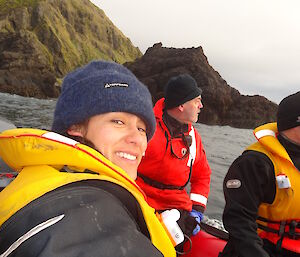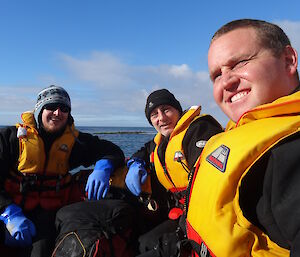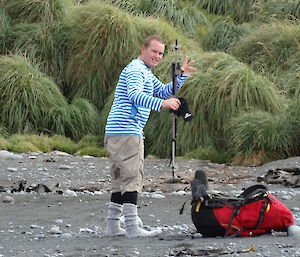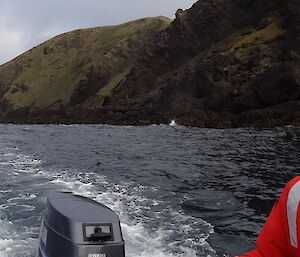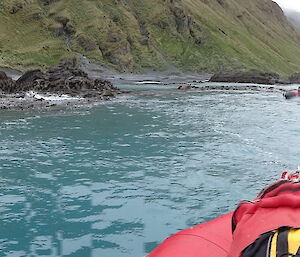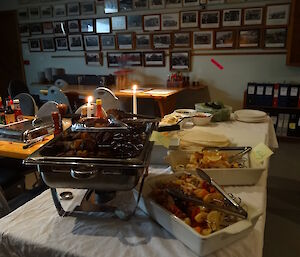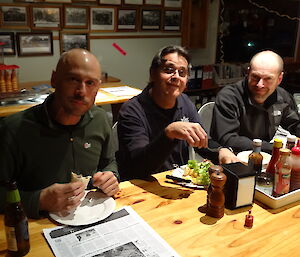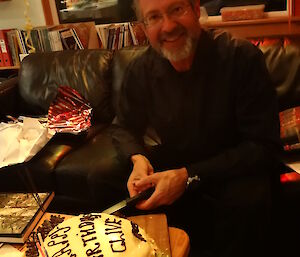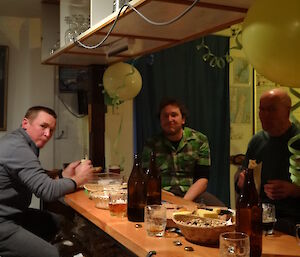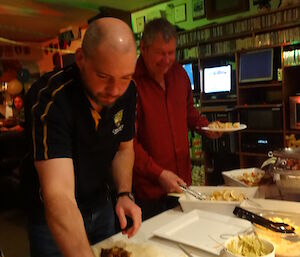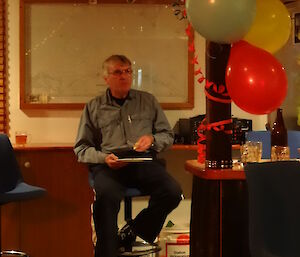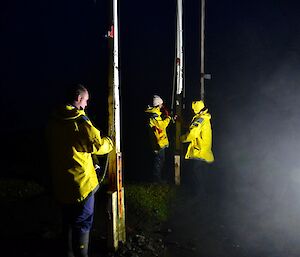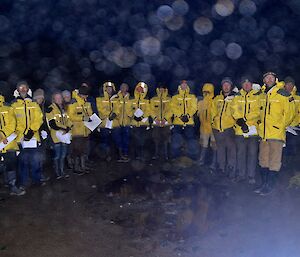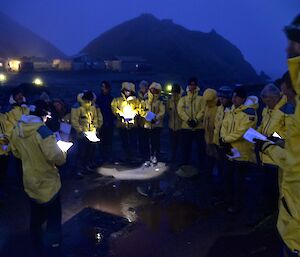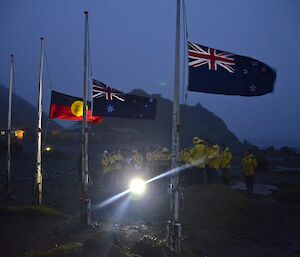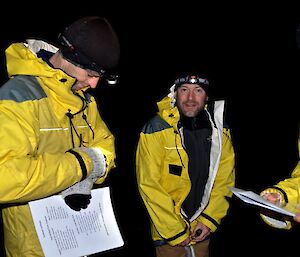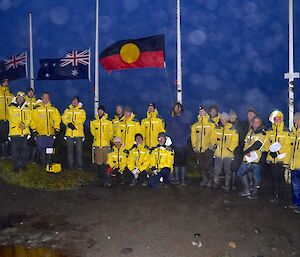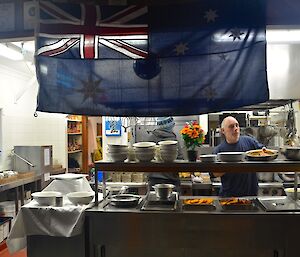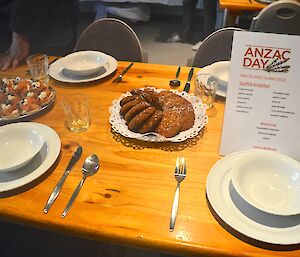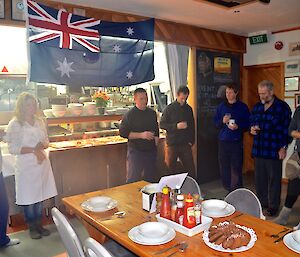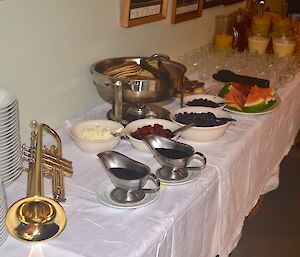While the rest of the team were tucking into a hearty Beef Wellington back at VJM , a few of us were tucked away in distant parts of the island tucking into our own feast. I was on the latter part of a trip down island, and had stopped in at Tiobunga Hut for the night. A scrumptious meal of braised steak, eagerly prised from the can, accompanied by a tin of potatoes, re-hydrated corn, peas and beans was demolished in a ravenous fashion. Dessert on this occasion was a cup of tea and some fruit slice biscuits.
It was the end of day seven of a nine day trip that traversed the length and the breadth of the island. A total of 110 kilometres was covered which was a good test for my boots. By all means this is not a huge distance, but combine it with some rugged terrain, a burst of early season hail, snow, sleet and a gusting 45 to 50 knot westerly winds and you certainly feel that you’ve earned your tucker at night.
The primary focus for the trek was to assess the current status of some of Macca’s most important residents — the wandering albatrosses. Researchers earlier in the season, had confirmed the presence of breeding birds on the southwestern corner of Macquarie Island. Armed with GPS coordinates, my task was to assess the current status of the nesting and report back.
My route south was via the undulating eastern shoreline to Brothers Point Hut, past the royal penguin colony at Sandy Bay. I caught up with Angela and Leona and their hard working rodent detection dogs for the night which included a generous dessert of apple custard swirls in exchange for a few fresh rations brought from the station larder.
Hiking south the next day, I then dropped in with Nick and Mike for the evening at Green Gorge. Teams are going well there. I then continued south for the next night’s accommodation at the luxurious Waterfall Bay hut.
Still trekking south, I passed the enormous king penguin colony at Lusitania Bay and catch up with the MIPEP crew of Steve, Karen and Tom working down at Hurd Point. Special mail delivery on this occasion for Karen, a hand delivered letter from family at home. I took a short break from walking too far that day, with some royal penguin observations around the Hurd Point area. The colonies are now rapidly diminishing in numbers — heading off shore for winter feeding grounds. Soon the only evidence that the birds have been here will the large abandoned rookeries. They’ll be back in spring to start the breeding cycle all over again.
Heading to Caroline Cove, it was time to undertake the most important task of the trip and check on the status of the albatross chicks. This isolated corner of the island is very much the domain of birds. Sheer cliffs, craggy weathered basalt spires rising 200 to 300 metres above the chilly waters of the Southern Ocean. Perched high on some of these seemingly inaccessible spires, a simple nest, a turret of plant matter and mud, sitting aloft almost oblivious to the elements, a single albatross chick, partially protected from the chilly winds by stands of tussock grass.
Observations made, careful notes taken from concealment of the tussocks, I moved on. A number of nests were checked in the Caroline Cove area but I had one more to check further north up the coast. Not all good news, however, as one of the nests noted as being active earlier in the season was empty. Other nest showed activity, either adult birds or chicks, but winter in these parts of the subantarctic can be long and harsh.
Time to think about heading home! I arrived back on station just in time for a hearty seafood laksa thanks to chef Tony.

